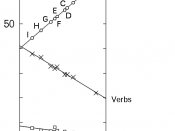a) Free morphemes and bound morphemes
Free morphemes are morphemes that are able to stand on its own in a language. This is usually a stem or root word. So, the meaning of the word allows us to identify the number of morphemes in a word.
Examples of free morphemes are, walk, happy white, run, sad, black.
Bound morphemes are morphemes that are unable to stand own its own. These morphemes usually occur as an affix.
In terms of prefixes, they may be, 'un', in 'undress', 'dis', in discontinue and 'mis' in misunderstand.
In terms of suffixes, they may appear in 'ness' in 'kindness', 'ment' in 'movement' , 'ly', in 'quickly'. All inflectional and derivational morphemes are bound morphemes.
Eg: (a) 'in-distinguish-able' (b) explain-ing
b) Inflectional morphemes and derivational morphemes
Inflectional morphemes are morphemes that have grammatical function but do not change the lexical category or the meaning of the word.
They are usually suffixes. There are eight inflectional morphemes in English. They are,
Suffix Example Type/ Form
-s Talk 3rd person present
-ed Talked Past form
-ing Talking 'ing' participle
-ed (-en) Talked (Broken) 'ed' participle
-s Dogs Plural
's Mother's Possessive
-er Smaller Comparative
-est Smallest Superlative
Derivational morphemes are morphemes that can either change the meaning or the word class of a word. Examples of derivational morphemes are,
'mis' in the word, 'misuse', 'un' in the word, ' 'unhappy'. In these cases, the root words have changed in meaning upon adding the prefix thereby creating a new word. In terms of changing the word class, we can see through the examples of, 'ness' , as in 'happiness' and 'ly', as in 'quickly.'
In the case of 'happiness', the root word, 'happy',is an adjective and with the adding of the morpheme 'ness' it changes to a noun. For...


